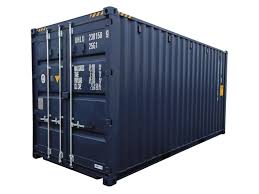Choosing the Right Specialty Container
2024-07-29
Specialty shipping containers are designed to meet specific needs and applications that standard shipping containers may not address. They offer customized features and functionalities for various industries and purposes. Here’s an overview of different types of specialty shipping containers and their uses:
1. Refrigerated Containers (Reefers):
- Purpose: Maintain a controlled temperature environment for perishable goods.
- Features: Equipped with a built-in refrigeration unit to keep contents at specific temperatures, typically ranging from -20°C to 30°C (-4°F to 86°F).
- Uses: Ideal for transporting food, pharmaceuticals, chemicals, and other temperature-sensitive products.
2. Insulated Containers:
- Purpose: Provide temperature control through insulation rather than active cooling or heating.
- Features: Built with thermal insulation to help maintain a stable temperature inside.
- Uses: Suitable for products that need temperature regulation but don’t require active cooling, such as certain chemicals or medical supplies.
3. Tank Containers:
- Purpose: Transport liquids in bulk.
- Features: Built with a cylindrical tank inside a standard container frame. Often made from stainless steel or other corrosion-resistant materials.
- Uses: Ideal for transporting chemicals, fuels, food-grade liquids, and other bulk liquids.
4. Ventilated Containers:
- Purpose: Provide airflow to prevent moisture buildup and decay.
- Features: Equipped with ventilation openings or fans to promote airflow.
- Uses: Suitable for transporting agricultural products, such as fruits and vegetables, that require ventilation to stay fresh.
5. Flat Rack Containers:
- Purpose: Transport large or oversized cargo that does not fit in standard containers.
- Features: Flat, open platform with collapsible sides. Provides easy loading and unloading of bulky items.
- Uses: Ideal for shipping machinery, construction materials, and vehicles.
6. Open Top Containers:
- Purpose: Allow for loading and unloading from the top, in addition to the standard side doors.
- Features: Equipped with a removable or retractable roof.
- Uses: Suitable for transporting oversized cargo, such as machinery or large equipment, that cannot be loaded through standard doors.
7. High Cube Containers:
- Purpose: Provide extra vertical space for additional cargo capacity.
- Features: Similar to standard containers but with increased height, typically 9.5 feet (2.9 meters) compared to the standard 8.5 feet (2.6 meters).
- Uses: Ideal for cargo that requires more headroom or for maximizing space utilization.
8. Double Door Containers:
- Purpose: Provide access from both ends of the container.
- Features: Equipped with doors at both ends for easier loading and unloading.
- Uses: Useful for operations where quick access from both sides is beneficial, such as in warehouses or distribution centers.
9. Custom-designed Containers:
- Purpose: Tailored to specific needs and requirements.
- Features: Can be designed with specific dimensions, materials, or modifications based on the customer’s needs.
- Uses: Suitable for unique or niche applications, such as mobile offices, retail units, or specialized storage solutions.
10. Modular Containers:
- Purpose: Allow for easy assembly and disassembly into larger structures.
- Features: Designed to be connected together to create larger spaces or customized structures.
- Uses: Ideal for constructing temporary offices, classrooms, or emergency shelters.
Choosing the Right Specialty Container:
1. Identify Needs: Determine the specific requirements for your cargo, such as temperature control, ventilation, or size.
2. Consult with Providers: Work with container suppliers or manufacturers to find or customize a container that meets your needs.
3. Consider Regulations: Ensure that the container complies with industry standards and regulations, especially for food, pharmaceuticals, or hazardous materials.
4. Budget: Factor in the cost of specialty containers, which may be higher than standard containers due to customization and added features.
Specialty shipping containers offer flexibility and functionality for a wide range of applications, ensuring that cargo is transported safely and efficiently under various conditions.



